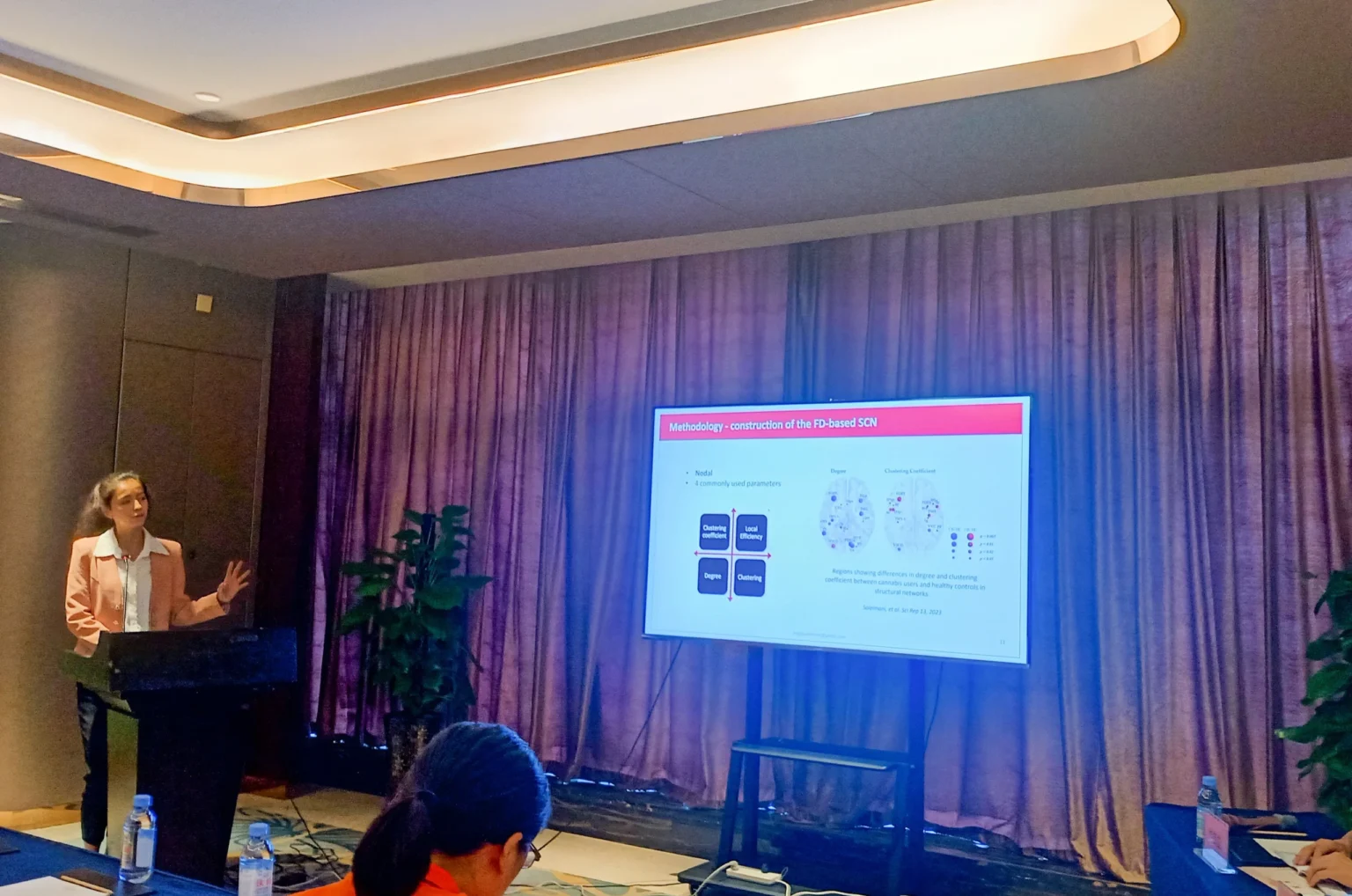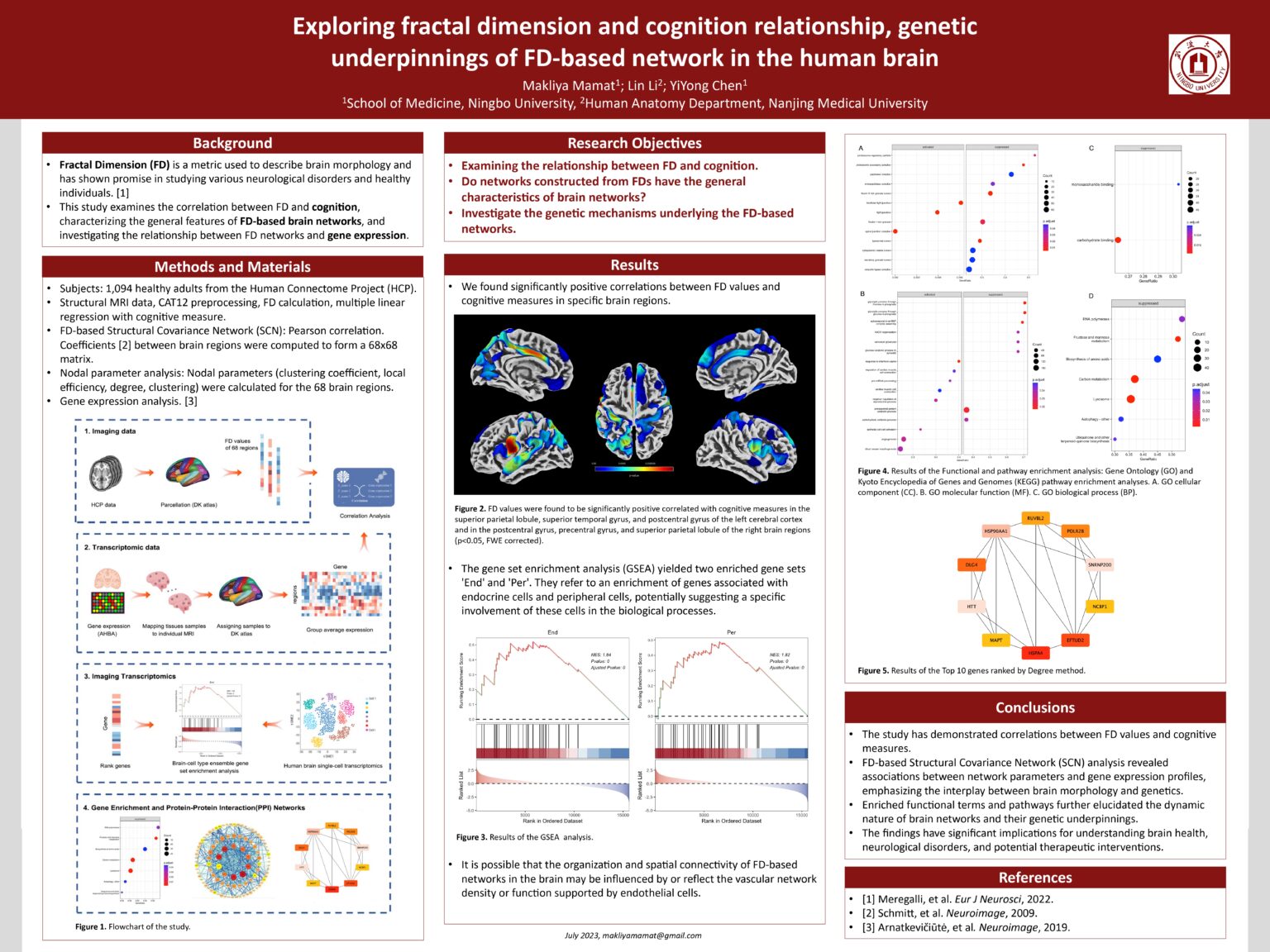My Journey at the CSAS 37th Annual Conference
Opening doors to new possibilities, collaborations, and knowledge in the realm of brain research.
Makliya Mamat / July 26, 2023
Recently, I had the incredible privilege of presenting our research on Fractal Dimension (FD) at the renowned Chinese Society for Anatomical Sciences (CSAS) 37th Annual Conference held in Chengdu, Sichuan. This extraordinary experience provided a platform for me to share our findings on FD, cognition, FD-based networks, and gene expression, while also granting me the opportunity to learn from an outstanding array of scientists and researchers from diverse disciplines within the field of anatomical sciences.
Throughout the conference, I was captivated by the immense knowledge and groundbreaking studies presented by researchers all around the country. Engaging with experts in various fields allowed me to broaden my horizons, deepen my understanding of brain morphology, and gain insights into the intricacies of their respective research endeavors. These interactions fostered a vibrant exchange of ideas, illuminating new avenues for exploration and collaboration in the pursuit of unraveling the mysteries of the human brain.
In our study, alongside Dr. Chen and Dr. Li, delving into the intricate relationship between FD values and cognitive measures. The correlations observed between FD and cognitive function shed new light on the interplay between brain structure and cognition, unraveling the complex mechanisms that contribute to our cognitive abilities.
Furthermore, the construction of Structural Covariance Networks (SCNs) based on FDs opened new doors of inquiry. With the guidance of the DK mapping approach, we extracted FD values from 68 distinct brain regions, treating each region as a node within a vast network. This innovative approach expanded the scope of brain network research, showcasing the potential of FD in enabling a deeper understanding of brain connectivity and functional interactions.
Another pioneering aspect of our study focused on the relationship between FD-based networks and gene expression. By examining FD-based SCN nodal parameters and their correlation with gene expression profiles derived from the AHBA resources, we revealed novel insights into the genetic underpinnings of brain morphological networks. Bridging the gap between brain morphology and genetic regulation, this investigation shed light on previously unexplored dimensions within the field.
As I contemplate the invaluable experience gained at the CSAS conference, I am extremely grateful for the opportunity to present our research and engage in discussions with esteemed researchers. Their expertise and diverse perspectives sparked a renewed zeal within me, driving me to explore new frontiers and continue pushing the boundaries of brain research.
I extend my sincere appreciation to my mentors, whose unwavering support and guidance have been instrumental in my research journey. Without their expertise and trust, this endeavor would not have been possible. I am also grateful for the unwavering support of my family and friends, whose encouragement has been a constant source of inspiration.
My participation in the CSAS 37th Annual Conference has been an inspiring journey, enabling me to contribute to the broader field of anatomical sciences while gaining invaluable insights into the work of my esteemed colleagues. As we collectively strive to unravel the mysteries of the human brain, I am confident that our research on FD will play a pivotal role. Together, through collaborative efforts, we can embark on a collective journey, paving new paths to unravel the intricate complexities of brain function, ultimately making a positive impact on our understanding and application of this knowledge.

Contents
Newsletter
- Updates from Makliya Notes will be delivered to your inbox.


